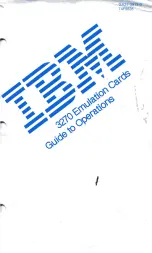
Elan Digital Systems Ltd.
9
HD717 USER’S
GUIDE
signals to control how it will behave when it first receives Biphase
data.
Note that the transmitter circuits in the HD717 are also capable of
operating in NRZ and FM0 modes. The receiver can cope with FM0
input data but cannot receive NRZ data (NRZ is simply generated as
“A-B”=5V
⇒
Logic ‘1’, “A-B”= -5V
⇒
Logic ‘0’).
The output drivers used for the Low Rate Data are slew rate limited
as required by ARINC specifications (typical 10-20us 10-90%).
Additionally, they are series terminated (in both A and B circuits)
with 22ohm resistors. This aids in driving highly capacitative loads
(i.e. very long cables).
2.3 DIGITAL I/O INTERFACE
8 Digital I/O drivers are provided on the HD717 to use as general
purpose control outputs and/or status monitoring inputs. The I/O
pins are logically grouped together in clusters of 1,1,2,4 I/O pins
(i.e. total = 8). These groupings define how the pins are set to inputs
or outputs. The groupings allow for any number of inputs or outputs
by using the correct combination of clusters. Additionally, each I/O
pin is “pulled” via a 47K resistor to a global control signal called
“DIOPull”. This signal can be set low or high in software to affect a
pull up or a pull down. The default (power-on) state is down.
The I/O pins are clamped to the internal Vcc and ground rails using
fast schottky diodes. This affords a good level of protection against
static damage.










































